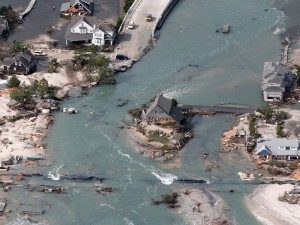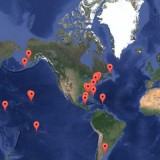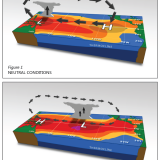Climate Impacts
 As shore-front infrastructure continues to expand, and the populations inhabiting low-lying coastal environments swell, the impact of long and short term climate variability upon our communities becomes increasingly pronounced. Rising sea level brings the ocean closer to our doorstep, allowing for damage by less intense storms in areas that once were considered high-ground. Research suggests however, as oceans warm, that the densely populated North East United States could experience more powerful storms than have been historically observed, and with greater frequency.
As shore-front infrastructure continues to expand, and the populations inhabiting low-lying coastal environments swell, the impact of long and short term climate variability upon our communities becomes increasingly pronounced. Rising sea level brings the ocean closer to our doorstep, allowing for damage by less intense storms in areas that once were considered high-ground. Research suggests however, as oceans warm, that the densely populated North East United States could experience more powerful storms than have been historically observed, and with greater frequency.
Changing climate may lead to wide spread aridity, a reduction in water availability, and more extreme weather patterns. Human activities are also agents of change affecting the behavior of natural processes and ecosystems.
It is vital to understand the mechanisms driving change as well as the impact disparate elements have upon each other. These questions are not limited to how human activity alters the environment or how environmental forces reshape our constructed world, but include how these forces act upon each other regardless of human involvement. Ocean warming impacts storm development. Storms impact coastal communities. Community infrastructure impacts coastal ecology and landforms, which in turn feed back into the flooding susceptibility of coastal communities.
Understanding the nature of these relationships and the resiliency of our climate and communities are key components to developing effective and sustainable strategies for survival in an uncertain future.



